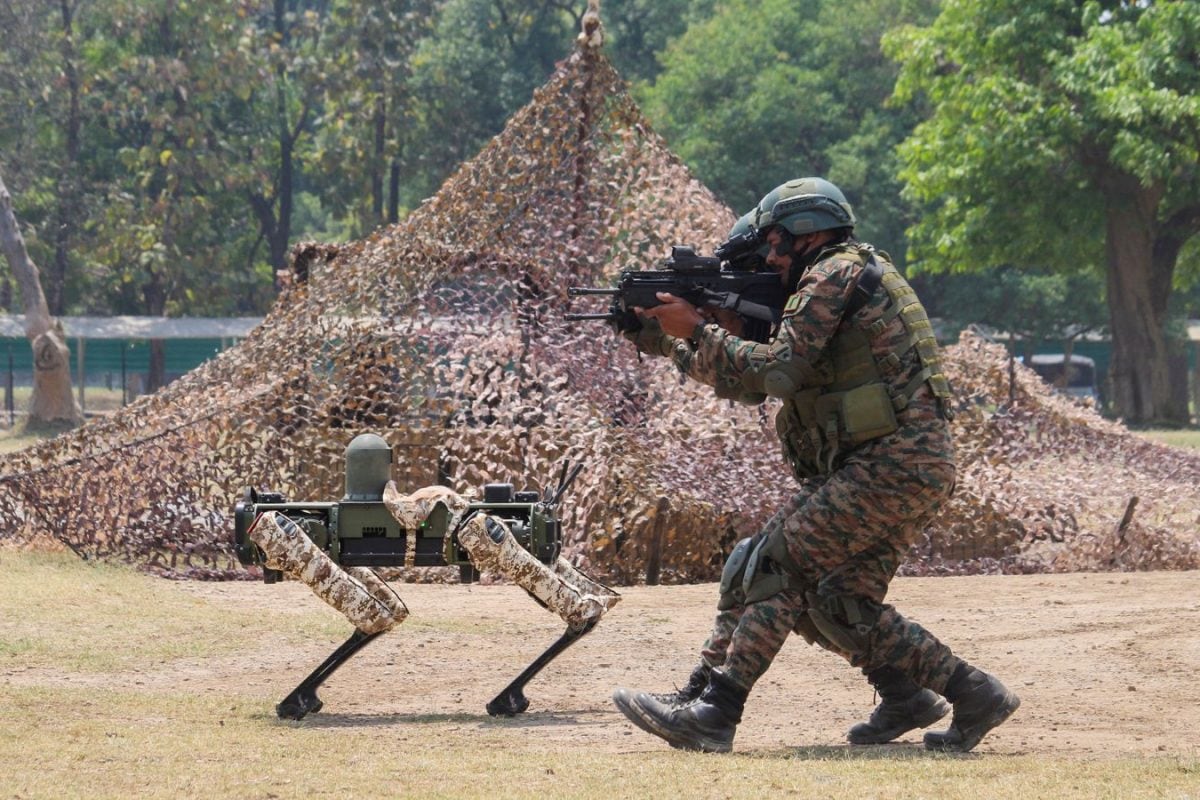

The Indian Army is undergoing a significant transformation to enhance its operational capabilities and readiness for modern warfare, with a focus on agility, integration, and technological advancement. Key elements of this overhaul include the raising of all-arms brigades named 'Rudra', the formation of light commando battalions known as 'Bhairav', and the integration of unmanned aerial systems (UAS) at the battalion level. These changes aim to create a more lethal and adaptable force capable of responding swiftly to emerging threats along India's borders.
Rudra All-Arms Brigades The 'Rudra' brigades represent a departure from traditional single-arm formations by integrating various fighting components into a single, cohesive combat structure. These components include infantry, mechanized infantry, armored units, artillery, special forces, and unmanned aerial systems. This integration is supported by specially designed logistics and combat support elements, ensuring that the brigades are self-sufficient and capable of rapid deployment across diverse terrains. These brigades are oriented for agile movement and task-based configuration. By combining these elements, the Rudra brigades are designed for rapid deployment and high-intensity operations across diverse terrains. These brigades are drawn from the existing pool of over 250 single-arm brigades. Traditionally, these units came together only during wartime or joint exercises. Now, they will operate as cohesive, self-sufficient units, stationed together in both peace and war.
Bhairav Light Commando Battalions Complementing the Rudra brigades are the 'Bhairav' Light Commando Battalions, elite special forces units trained for high-impact, surprise operations along hostile borders. These battalions are equipped with advanced technologies and will employ advanced tactics to counter the enemy. Their tasks include infiltration behind enemy lines, surveillance, and rapid strikes. These agile and lethal special forces units are ready to surprise the enemy on the borders. The army plans to form 40 to 50 such battalions in phases. These battalions will be specially trained and deployed in designated areas to enhance strike capabilities with teams trained for specific missions. They will operate under various commands with specific operational roles, and be trained and equipped accordingly.
Integration of Unmanned Aerial Systems (UAS) Recognizing the growing importance of drone warfare, the Indian Army is integrating UAS at the battalion level. Every infantry battalion, comprising over 400 units, will be equipped with a dedicated drone platoon. This move aims to enhance situational awareness, surveillance capabilities, and precision strike options for infantry units. Artillery regiments are also being equipped with "Divyastra" batteries, which include loitering munitions, enhancing their firepower and precision strike capabilities. These are designed to track and strike moving targets in real-time.
Modernization and Technological Upgrades In addition to structural changes, the Indian Army is focused on modernizing its equipment and adopting new technologies. This includes upgrading artillery with advanced gun systems and missile systems, strengthening army air defense with indigenous missile systems, and enhancing surveillance capabilities with advanced sensors and UAV integration. The army is also rearming for modern warfare. New 'Shaktibaan' regiments are being introduced with 'Divyastra' batteries — a combination of surveillance assets and loitering munitions.
These developments reflect a shift towards sensor-driven warfare, where real-time intelligence and precision strikes define success. The new formations are part of a broader strategy to make the Indian Army a future-oriented force capable of responding swiftly and decisively to emerging threats.